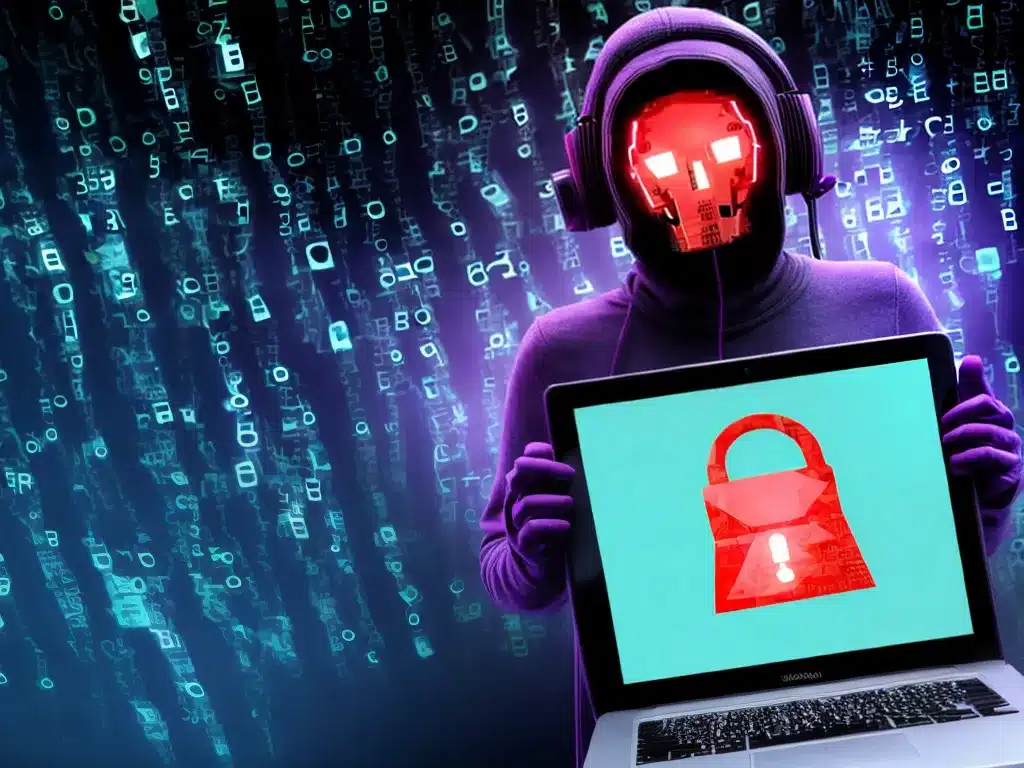
Ransomware attacks can be devastating, locking you out of your own files and data. As someone who has gone through this, I want to share what I’ve learned about recovering from a ransomware attack. Here’s a step-by-step guide on what to do if you become a victim.
1. Disconnect Your Devices from the Network
The first thing you need to do is disconnect all infected devices from any network they are on. Unplug ethernet cables, disable wifi, etc. This stops the ransomware from spreading and infecting other devices on the network.
Cutting network access contains the attack and gives you space to start recovery efforts. Don’t reconnect devices until you are sure the ransomware has been completely removed.
2. Identify the Ransomware
Identifying the specific ransomware strain is crucial, as it can determine your options for decryption.
There are a few ways to identify what ransomware infected your system:
- Check the ransom note. These usually include the name of the ransomware.
- Look at file extensions of encrypted files. Ransomware often uses unique extensions to mark encrypted files.
- Use antivirus or analysis tools to detect the ransomware signature.
Resources like ID Ransomware can help identify the ransomware based on signatures and patterns.
3. Check for Available Decryptors
Once you’ve identified the ransomware, check sites like Nomoreransom.org to see if there are any available decryption tools or keys.
For newer strains, decryptors often don’t exist yet. But for common ransomware families like Ryuk, WannaCry, or Stop, decryption tools are sometimes available.
This step either provides you a free decrypter tool, or confirms that paying the ransom is your only option for guaranteed decryption.
4. Assess Your Backup Options
The best way to recover without paying the ransom is to restore files from backups. Take stock of any backups you have:
- Cloud backups: Assess if cloud backup services have up-to-date files that weren’t affected.
- Offline backups: Check any external hard drives disconnected from your network.
- Volume shadow copies: See if System Restore has file snapshots that can be restored.
Having multiple layers of backup across both cloud and offline storage gives you maximum recovery options.
5. Wipe and Rebuild Infected Systems
Once you’ve backed up accessible files, the next step is to wipe infected systems and rebuild from scratch.
This involves:
- Wiping the hard drives and resetting devices to factory settings.
- Reinstalling operating systems from scratch to remove any traces of the ransomware.
- Changing all passwords that were stored on the infected devices.
Wiping systems is time consuming but necessary to ensure the ransomware is eliminated before restoring data.
6. Restore Data from Clean Backups
With fresh systems in place, you can start restoring your files from backups.
- Upload cloud backup files to the new devices first.
- Use external drives to manually transfer backup files.
Go folder by folder to ensure everything is intact. Having a full, clean backup to work from makes recovery much less stressful.
7. Bolster Security to Prevent Further Attacks
The final step is learning from the attack and bolstering security to prevent it happening again:
- Install and consistently update antivirus/malware software.
- Enable spam filters and be vigilant against phishing emails.
- Create awareness about ransomware among employees.
- Develop a proper backup strategy for the future.
Staying on top of system patches, keeping software updated, and practicing cybersecurity awareness can help you avoid becoming a victim again down the road.
In Summary
Recovering from a ransomware attack takes time but is possible. The key steps include:
- Isolating infected devices.
- Identifying the ransomware strain.
- Checking for decryptors.
- Assessing backup options.
- Wiping and rebuilding systems.
- Restoring data from clean backups.
- Improving security.
With the proper backup foundation and disinfection procedures, you can recover your files without paying the ransom. Just stay calm, move methodically through each step, and you’ll regain access to your data.












